Staufenbiel Red Bull Edge 540 1.3m BNF Basic
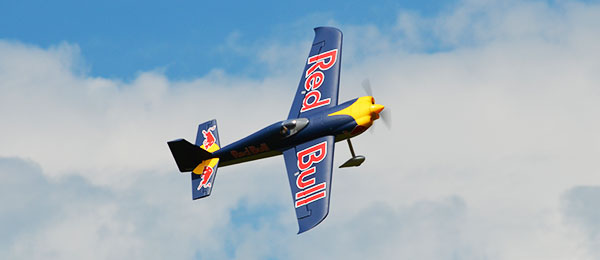
Written by Troy Hamm This model is ready to race Product review Photos by the author
Specifications
Model type: Foam aerobatic aircraft • Wingspan: 52 inches • Length: 50 inches • Weight: 3.7 pounds • Power system: 32-size brushless electric • Recommended battery: 14.8-volt 4S 2,400-3,200 mAh LiPo • Radio: Four-channel minimumTest-model details
• Power system: E-flite EFLM4760 760 Kv (included) • ESC: 60-amp brushless with 3-amp BEC (included) • Radio system: Spektrum DX8 transmitter; Spektrum AR636A AS3X receiver (included); four Spektrum digital metal gear servos (included) • Propeller: 13 x 5 three-blade (included) • Battery: E-flite 4S 14.8-volt 2,800 mAh LiPo • Ready-to-fly weight: 3 pounds, 14 ounces • Flight duration: 6 minutes • Price: $199.99Pluses
• Beautiful paint work. • Adhesive included. • Extra hardware included. • Includes high-quality electronics. • Easy and fast assembly. • Excellent instructions. • Preinstalled pilot figure. • Flies great.Minus
• Hardware packages not labeled.Bonus video
Product review
In 2001, the Red Bull company began developing the Red Bull Air Races. The goal was to develop an air race series that would challenge the ability of the world’s best pilots—creating a race that combined skill with speed and precision. In 2003, after two years of planning and development, the first official Red Bull Air Race was held in Zeltweg, Austria. The race is held on a specially designed obstacle course measuring nearly 4 miles long. The racecourse features 82-foot-high pylons called Air Gates which the pilots navigate around at high speeds. The Red Bull Air Races have become one of the largest spectator sports in the world, with hundreds of thousands of fans in attendance. The series has had as many as 15 pilots competing in up to 10 races per year. The 2011-2013 seasons were cancelled by Red Bull for restructuring, and so that new safety measures could be implemented. The Red Bull Air Race Series resumed in 2014. The Zivko Edge 540 has been a dominant aircraft since the beginning of the Red Bull Air Races, winning eight out of the 10 championships. The single-seat full-scale Edge 540 weighs less than 1,200 pounds and is powered by a Lycoming Thunderbolt 540-cubic inch six-cylinder engine that turns a Hartzell three-blade composite propeller. Not only is the Edge aerobatic, it’s fast—with a top speed of more than 260 mph. Horizon Hobby has released a scale version of the Edge 540, the Staufenbiel Red Bull Edge 540 BNF Basic. The 52-inch wingspan Edge 540 is built of lightweight and durable Z-Foam and is painted in the Flying Bulls color scheme. The paint quality is exceptional. It’s definitely the best-looking foamie that I have seen.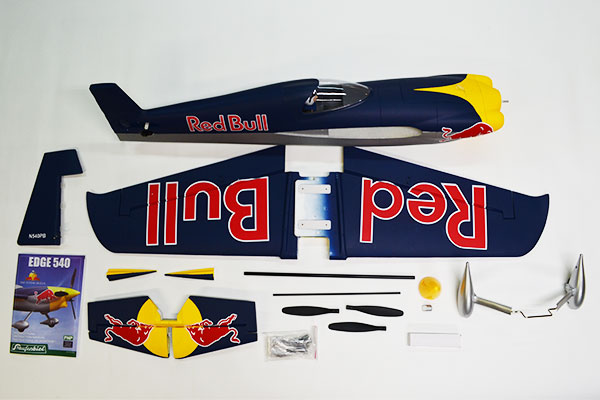
This is what’s included in the box; it’s less than an hour from being ready to fly.
With composite materials providing internal reinforcement, the airframe is stiff and strong. The Red Bull Edge 540 is a Bind-N-Fly (BNF) aircraft that features preinstalled electronics, including a 760 Kv brushless motor, 60-amp ESC, and four 17-gram digital metal gear servos. A Spektrum AR636A six-channel receiver with AS3X stabilization technology is also preinstalled. The airplane arrived in one medium size box. It was well protected and in perfect condition.
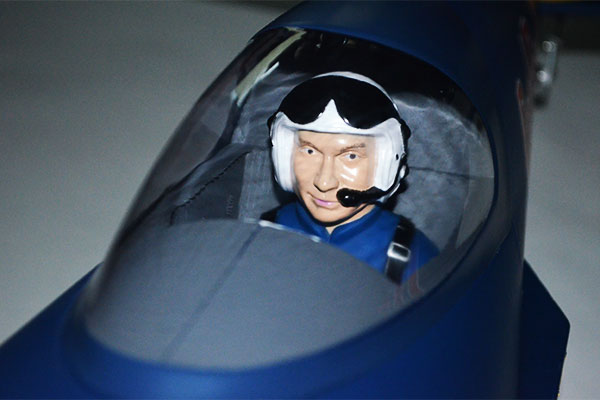
The preinstalled pilot figure looks great and is scaled perfectly for the Edge.
Assembly
As with any build, it’s a good idea to take a few minutes to read through the construction manual before starting the assembly. Because the electronic components are preinstalled, the assembly only takes approximately an hour to complete.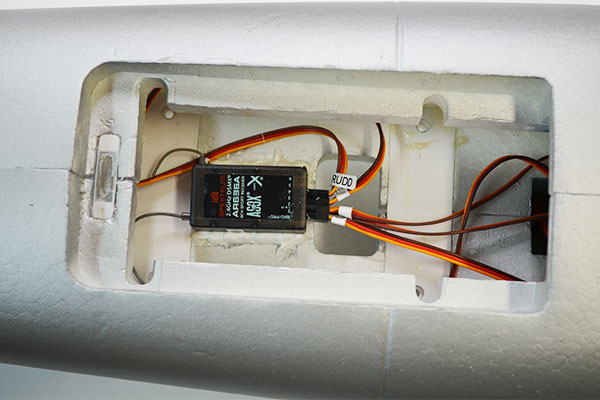
A Spektrum AR636A receiver with AS3X three-axis stabilization is premounted in the fuselage.
Construction begins by installing the main landing gear. The wheels and wheel pants are preinstalled on the landing gear, so all that’s required is to insert the landing gear in the fuselage and secure it with four screws. The rudder is prehinged but isn’t glued into the vertical stabilizer. After the tail wheel bracket is slid into place, the rudder is glued to the fuselage with the included adhesive. The next step in assembly is installing the four control horns on the control surfaces. Each control horn has two screws holding it in place. Installation of the horizontal stabilizer takes a couple of minutes. Slide the carbon-fiber stabilizer tube into place through the fuselage, install the two horizontal stabilizer halves, and then secure them with two screws. After the two wing root fairings are glued in place on the fuselage, a carbon-fiber wing tube is installed and the wing is bolted in place. The four pushrods are preassembled to the correct length. They take little time to install on the airframe. The next step is binding the receiver to the transmitter and programming the transmitter. All of the settings, including the control surface throws, are listed in the manual. The instruction manual does a great job of detailing and explaining the steps necessary to program the transmitter, which made setting up my Spektrum DX8 quick and easy. The final step in construction requires mounting the propeller and spinner. This is probably the most time-consuming part of the assembly, but it takes less than five minutes to complete.
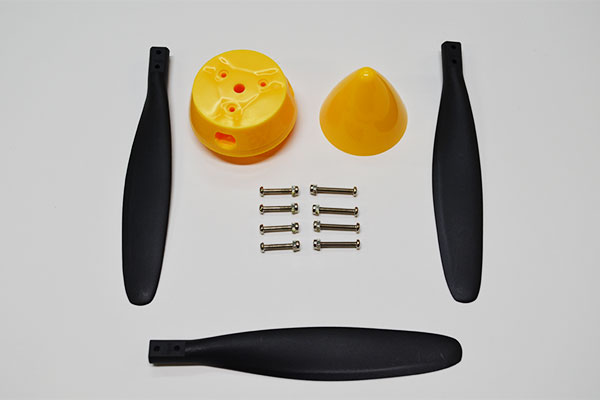
The propeller and spinner are ready for assembly. The three-blade propeller looks scalelike, is quiet, and performs well.
The Edge features a scalelike three-blade propeller and a three-piece spinner. The three blades are first bolted to the spinner’s backplate, and then the center piece of the spinner is bolted into place. The shorter screws are used in the outside holes and the longer screws in the inside holes. The propeller is then installed on the motor, and the front of the spinner secures the propeller. This completed the assembly. The Edge weighed 3 pounds, 14 ounces ready to fly with the battery installed. A nice feature of the kit is that it includes an extra control horn and screws for each step in the assembly process.
Flight Report
At the flying field, the Edge was given a range check and a thorough preflight inspection. The takeoff was uneventful. The Edge has a long fuselage and tracked straight on the ground. Although the wheels seemed small for grass, it had no tendency to nose-over on takeoffs or on landings. With the center of gravity at the recommended setting, the Edge flew true and required little trim. The Edge is stable in flight and flies smoothly. The AS3X technology does a great job of dampening the effects of windy conditions and gives the airplane a locked-in feel. The 32-size motor provides ample power for both aerobatic and high-speed flight.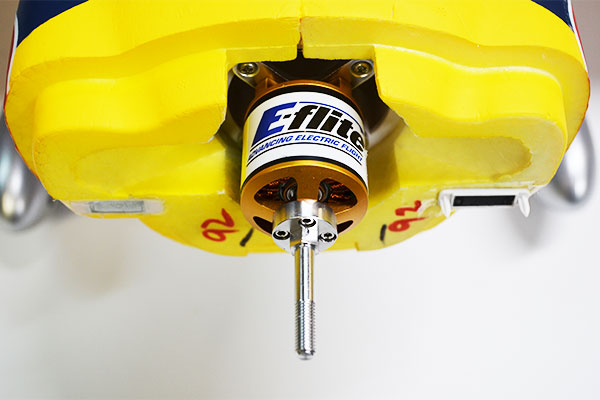
The smooth and powerful E-flite 760K brushless motor comes preinstalled on the fuselage.
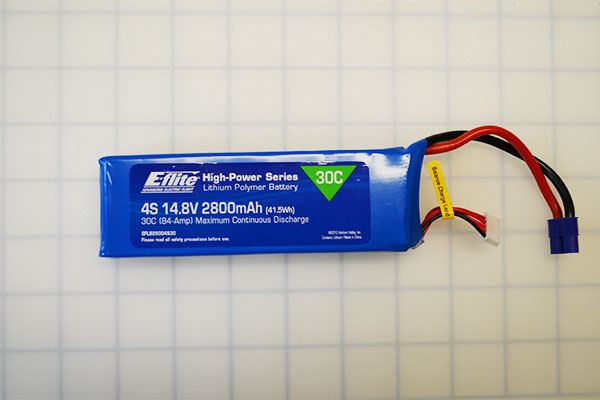
The E-flite 4S LiPo 2,800 mAh LiPo battery provides long flight times and plenty of power.
The Edge’s ailerons are effective on the low-rate settings, which work great for general flying. Flip to high rates and the Edge will perform fast aileron rolls. I was impressed by how precise it flies. The preinstalled servos center well, which keeps the airplane in trim and makes flying precision aerobatic maneuvers easy. The Edge has plenty of power for 3-D maneuvers. It is stable while hovering and really locks into both upright and inverted harriers. I found myself wanting more elevator authority for flying waterfalls, but the elevator had plenty of authority for other 3-D maneuvers.
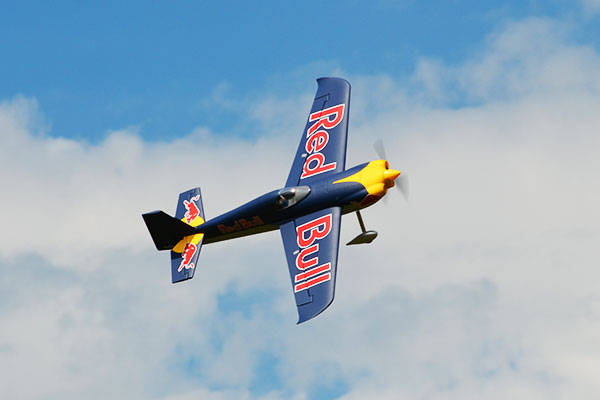
The Red Bull color scheme is bright and really stands out in the sky.
The Edge is a miniature Red Bull Air Racer and similar to its full-size counterpart. It really shines at flying fast. I had the most fun flying the Edge low and fast in true Red Bull Air Race fashion. Although the Edge will fly fast, it still slows down to a crawl for landing. Overall, the aircraft is a blast to fly and it looks great on the ground and in the air.










2 comments
Prop & spinner
Prop & spinner
Add new comment